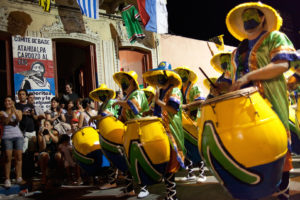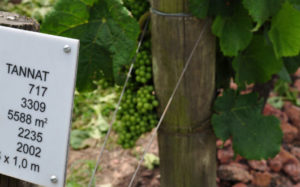It might not be as big as Argentina or Chile, but don’t let Uruguay’s diminutive size fool you, as this often overlooked country has lots of character and some great wine.
Uruguay is the little country between Argentina and Brazil and on the coast. It’s not Paraguay, and they are separate countries. Sounds patronising, but its surprising how many Uruguayans will tell you anecdotes of how most westerners they meet actually have no idea where this little gem of a country is. And if you look at any bottle of Uruguayan wine, they all put a map of South America on the map, highlighting where their country is.
If you are travelling in the Southern Cone, don’t miss it out. Yes – it’s organised, it’s clean, people go to bed at a reasonable hour and transport runs on time, but that doesn’t make it boring. With Christmas and New Year’s celebrations taking the form of huge cider throwing fights, endless fireworks and lots of parties, every year gets off to a good start here, but the best time to visit the capital city of Montevideo has to be Carnival in February and March. The longest Carnival in the world, with 40 days of theatre, music, murgas and candombe – it even gives Rio de Janeiro a run for its money.
Aside from fiestas there is another good reason to hop across the Rio del Plata to Uruguay, for it’s wine…
Although a lesser known new world wine producer, Uruguay has more of a history in winemaking than many know. The country has been making wine for over 250 years and is the fourth biggest producer in South America. As with most wine producing countries, the focus in earlier years was on quantity rather than quality, but in the last 20 years the focus shifted towards making fine wines.
A handful of wineries began making more than just table wine, and eventually the reputation of Uruguay’s vino started to gain footing in the international wine scene, especially for its unique Tannat.
Brought to Uruguay by Basque immigrant Pascual Harriague in 1874, this French grape now makes up over a third of Uruguay’s 8,200 hectare production. Although Tannat opened the doors for Uruguay, there is more to discover beyond this rustic grape – most notably some very interesting whites.
The main wine region in Uruguay is Canelones (named so after a tree, not the pasta) – the region surrounding Montevideo, and easily accessible by short car trips from the city centre. The touristic wineries in Uruguay’s Caminos del Vino (wine route) are all quite tiny compared to Argentine standards, but nonetheless there is a great scope of character. The only thing in common is their personal touch – you won’t find uniforms, or sun hats emblazoned with the winery name here… you are far more likely to end up drinking with the owner than a guide.


